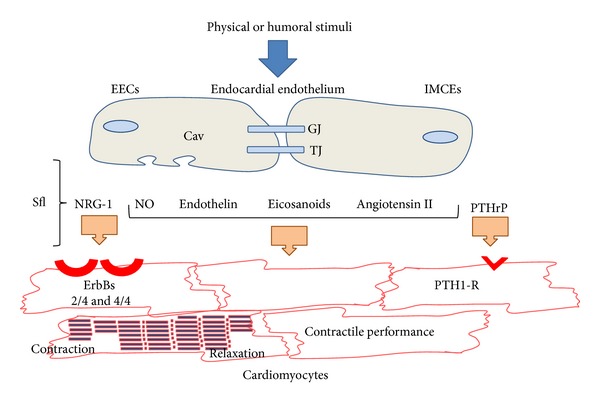Figure 1.

Paracrine communication between cardiac endothelial cells and cardiomyocytes. Endocardial endothelial cells (EECs) and intramyocardial capillary endothelial cells (IMCEs) respond to physical and humoral stimuli with the release of mediators such as nitric oxide (NO), endothelin 1, eicosanoid, and angiotensin II. These endothelial cells also release neuregulin-1 (NRG-1) acting on ErbB receptors on myocardial cardiomyocytes. IMCEs release parathyroid hormone-related peptide (PTHrP) which activates PTH1 receptor (PTH1-R) located on the cardiomyocytes. Gap junctions (GJ) allow cell-to-cell coupling for rapid intercellular communication of functional demands. Tight junctions (TJ, including zonula adherens) modulate the transendocardial endothelial-permeability through intercellular clefts. A large number of endothelial signaling molecules localize to caveolae (Cav). Sfl: subendocardial fibroelastic layer (or extracellular matrix including sympathetic nerve fascicles).
